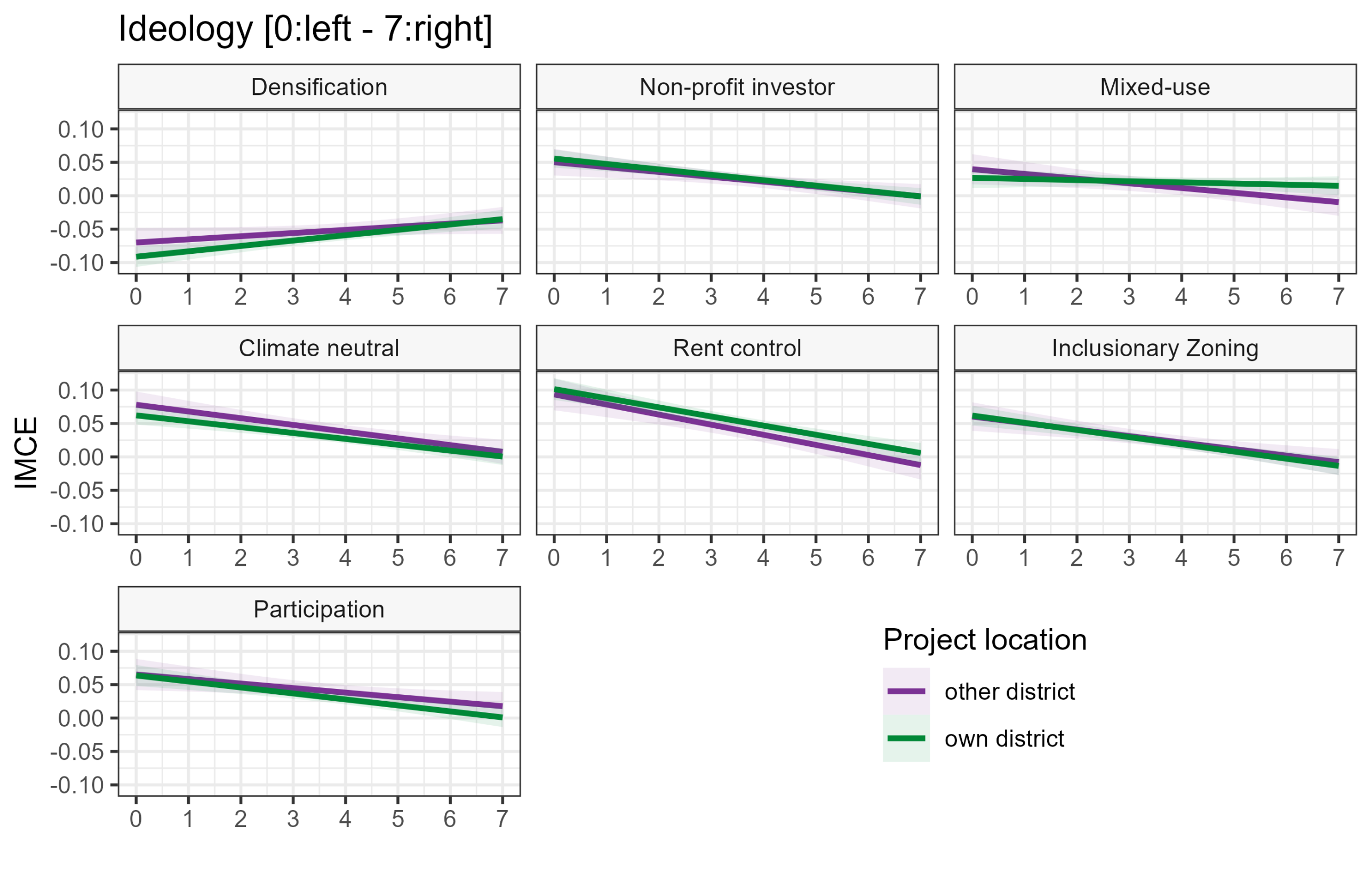New Publication on Regulatory Preferences and Housing Densification
Michael Wicki, Fiona Kauer, Katrin Hofer, and David Kaufmann have published a new article in the Journal of Urban Affairs titled Nuancing NIMBYism: How regulatory preferences shape public acceptance of housing densification.
The paper examines how the regulation of densification projects, rather than their proximity, shapes public acceptance. Urban densification is often contested in practice, despite broad support as a planning ideal. Public debates tend to focus on proximity-based opposition. This article challenges that assumption.
Based on survey data from 12,611 residents in Berlin, Chicago, London, Los Angeles, New York, and Paris, the authors analyze how physical proximity and political ideology shape acceptance of differently regulated housing projects. Using a conjoint experiment, they assess the causal effect of project attributes such as rent control, inclusionary zoning, investor type, and climate goals on acceptance and how this varies depending on individual characteristics.
The findings show that political ideology is a far stronger predictor of acceptance than proximity. Left/liberal respondents are more supportive when projects are highly regulated. Right/conservative respondents tend to support densification per se but are largely indifferent to regulatory add-ons. Proximity has only a marginal effect. The study suggests that public opposition to densification is less about one’s own backyard and more about the role of the state in regulating housing development. It calls for a shift in the debate toward the politics of regulation and a more nuanced understanding of public preferences.
The full article is available open access external page here.
